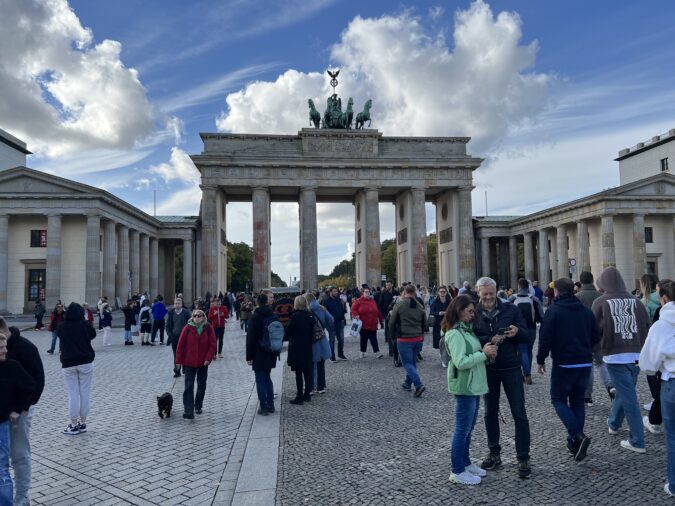Things to See in Berlin, Germany
Berlin’s turbulent history has left an indelible mark on the modern city, creating a captivating tapestry of sights that provoke reflection on humanity’s darkest hours and ultimate triumphs.
From the imposing Brandenburg Gate to somber Holocaust memorials and graffitied remnants of the Berlin Wall, each landmark weights heavy with symbolism.
Exploring these thought-provoking destinations allows visitors to confront a painful past while celebrating hard-won freedoms – providing an unmissable glimpse into Berlin’s phoenix-like ability to rise anew.
(Note: If you want to travel to Germany or anywhere solo, and don’t know how, my comprehensive course will help you. Get it here: Solo Male Blueprint)
Brandenburg Gate
When I arrived in Berlin in October 2023, the sight I wanted to see most was the iconic Brandenburg Gate.
Towering over Pariser Platz, the Brandenburg Gate is an enduring symbol of Berlin’s storied past. This monumental sandstone structure, constructed in the late 18th century, features twelve Doric columns topped with a stunning Quadriga statue – a horse-drawn chariot carrying the winged figure of Victory.
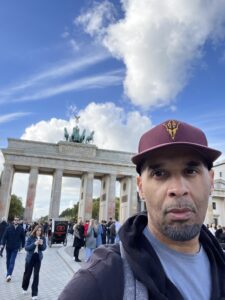
During the Cold War years, the gate stood trapped behind the Berlin Wall, a potent reminder of a city divided.
However, after German reunification in 1989, euphoric crowds gathered here to celebrate the tearing down of the hated barrier.
The gate’s crossing was reopened, allowing free passage between East and West for the first time in decades.
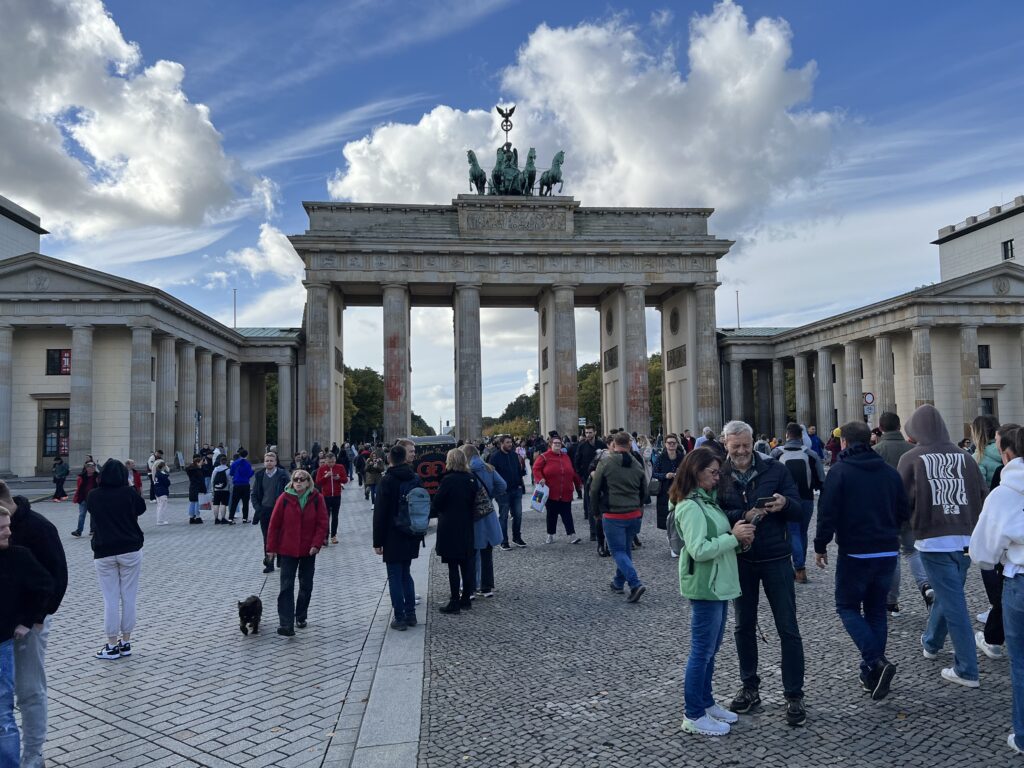
With its stately grandeur and historical significance, the Brandenburg Gate has born witness to some of Berlin’s most tumultuous chapters. From Napoleonic conquest to Nazi rallies, and from the devastation of World War II to the city’s hard-won reunification, this architectural masterpiece stands resolute.
Reichstag Building
The Reichstag’s iconic glass dome crowns one of Berlin’s most historic and symbolic buildings.
Construction of the Neo-Renaissance edifice began in 1884 to house the Imperial Diet. Scarred by fire in 1933 amid the Nazi rise to power, it remained in ruins until being renovated after reunification, reopening in 1999.
The new transparent dome offers panoramic city views while allowing visitors to ascend above the parliament chamber below – a striking display of the democracy the building represents.
After the Battle of Berlin in 1945, a Soviet flag was raised over the bombarded structure, marking the end of Nazi rule.
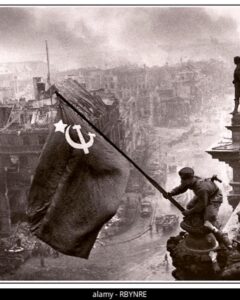
Checkpoint Charlie
Once the infamous crossing point between East and West Berlin, Checkpoint Charlie stands as an iconic relic of the Cold War era.
This former border control station gained global notoriety as a flashpoint of tensions and dramatic escapes during the city’s 28-year partition.
Today, a replica of the tiny Allied checkpoint booth sits on the original site, surrounded by tourist attractions. Nearby pavilions display thought-provoking exhibits detailing daring escapees who risked their lives to flee Soviet oppression.
Newlywed guards perpetually stand watch, posed for photos – lighthearted reminders of Checkpoint Charlie’s dark history as a militarized crossroads emblematic of an ideologically divided world.
Alexander Platz
Alexanderplatz has served as the throbbing heart of East Berlin for generations. This massive city square was carefully cultivated by communist authorities to embody the power and progress of the German Democratic Republic.
Grand socialist realist buildings like the soaring Park Inn Hotel soar over the platz, their austere facades projecting the state’s utopian vision.
At the plaza’s center, the striking Fernsehturm or TV Tower pierces the skyline – an icon of East Berlin visible from across the city. Unveiled in 1969, the tower’s distinctive sphere top housed a rotating restaurant offering limited East German citizens a rare panoramic view.
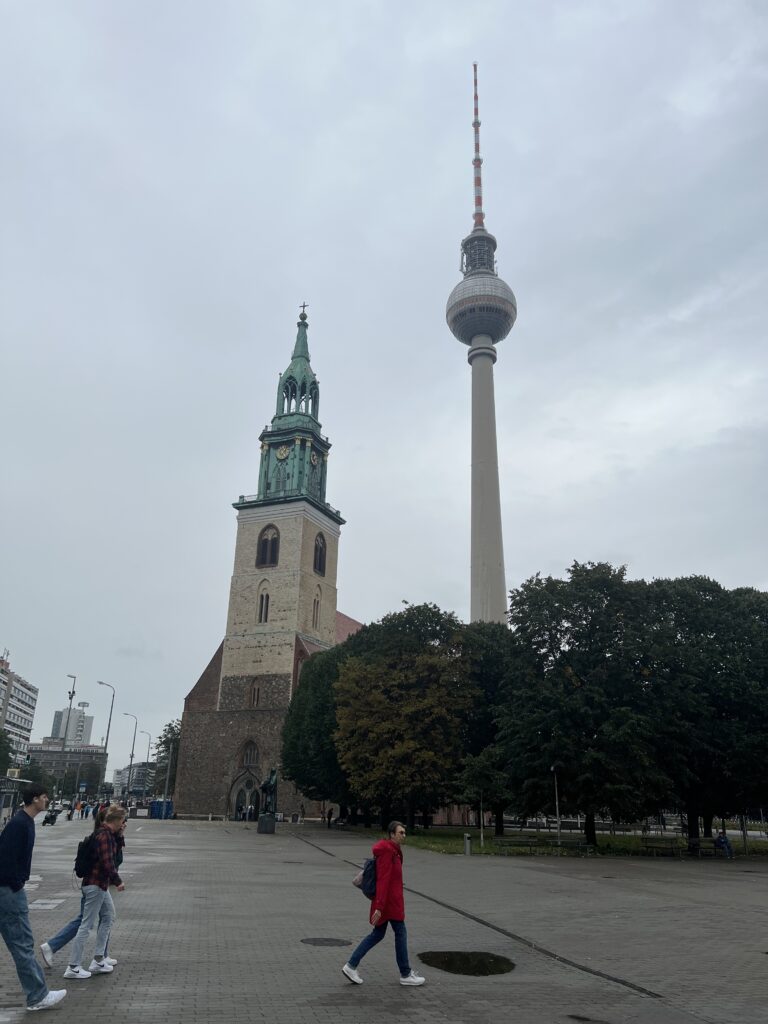
Under the watchful gaze of “Uncle Walter” – a larger-than-life aluminum statue of GDR-founder Walter Ulbricht – Alexanderplatz buzzed as a major local and tourist crossroads.
Throngs gathered for annual May Day parades celebrating communist ideals. Today, the square retains its historic buildings amidst modern additions, providing a window into Berlin’s Soviet-era streetscape and symbolism.
Remnants of the Berlin Wall
The remnants of the Berlin Wall stand as powerful reminders of the city’s turbulent past and its journey towards unity. While much of the infamous barrier was torn down after the fall of the Berlin Wall in 1989, several poignant sections still remain scattered throughout the city in 2024.
One of the most iconic remnants is the East Side Gallery, a 1.3 km stretch of the Wall that has been transformed into an open-air gallery. Here, vibrant murals painted by artists from around the world cover the graffitied concrete, turning what was once a symbol of oppression into a celebration of creativity and freedom.
Other notable remnant sections include the Berlin Wall Memorial on Bernauer Strasse, a stark reminder of the divided city with an open-air exhibition detailing its history. At the Topography of Terror museum, visitors can see one of the longest remaining stretches of the original wall.
For visitors, these remnants offer a tangible connection to Berlin’s past and the opportunity to reflect on its hard-won progress.
Hitler’s Bunker
This has got to be one of the creepiest places I’ve ever seen.
Deep beneath the shattered ruins of Berlin in 1945, Adolf Hitler took his own life in a subterranean bunker, marking the final chapter of the Nazi regime’s reign of terror.
The Führer-bunker, as it was known, was located near the Reich Chancellery in what is now the Wilhelmstrasse area of central Berlin.
This underground complex of reinforced concrete rooms and corridors served as Hitler’s final headquarters during the Battle of Berlin in the closing months of World War II.
It was here, on April 30th, 1945, that the dictator committed suicide alongside his wife Eva Braun as Soviet forces closed in.
Today, the site where the bunker once stood lies unmarked, buried beneath a nondescript parking lot and apartment buildings. However, for those seeking to understand the full scope of Nazi atrocities, visiting this unassuming location holds significant historical weight.
While no remnants of Hitler’s final hideout remain above ground, chilling accounts and artifacts from within the bunker’s cramped confines offer a sobering glimpse into the madness that transpired here.
Holocaust Memorial
Unveiled in 2005 after years of controversy and debate, the Holocaust Memorial stands as a solemn tribute to the six million Jewish victims of the Holocaust.
Situated just steps from the Brandenburg Gate, its 2,711 concrete slabs arranged in a grid pattern create an undulating landscape of shards meant to produce a confusing atmosphere.
For Berlin, a city still grappling with its dark past, the memorial represents an effort to ensure the horrors of the Nazi genocide are never forgotten.
With an underground museum and place for remembrance and reflection, it serves as a powerful reminder of humanity’s capacity for both darkness and resilience.
Moltke Bridge
As a World War II history buff, I wanted to see this bridge.
The Moltke Bridge carries immense historical significance as the gateway through which Soviet forces entered Berlin in the final days of World War II. On April 28, 1945, Red Army troops crossed this bridge over the Spree River into the city center after fierce fighting, marking the beginning of the final Battle of Berlin.
For decades after, the bridge formed a boundary between East and West Berlin during the Cold War partition. Today, it symbolizes Berlin’s turbulent 20th century journey through oppression, division, and ultimate reunification.
Tiergarten Soviet War Memorial
Amidst the tranquil Tiergarten park, the imposing Soviet War Memorial stands in somber tribute to Red Army soldiers fallen during the brutal 1945 Battle of Berlin.
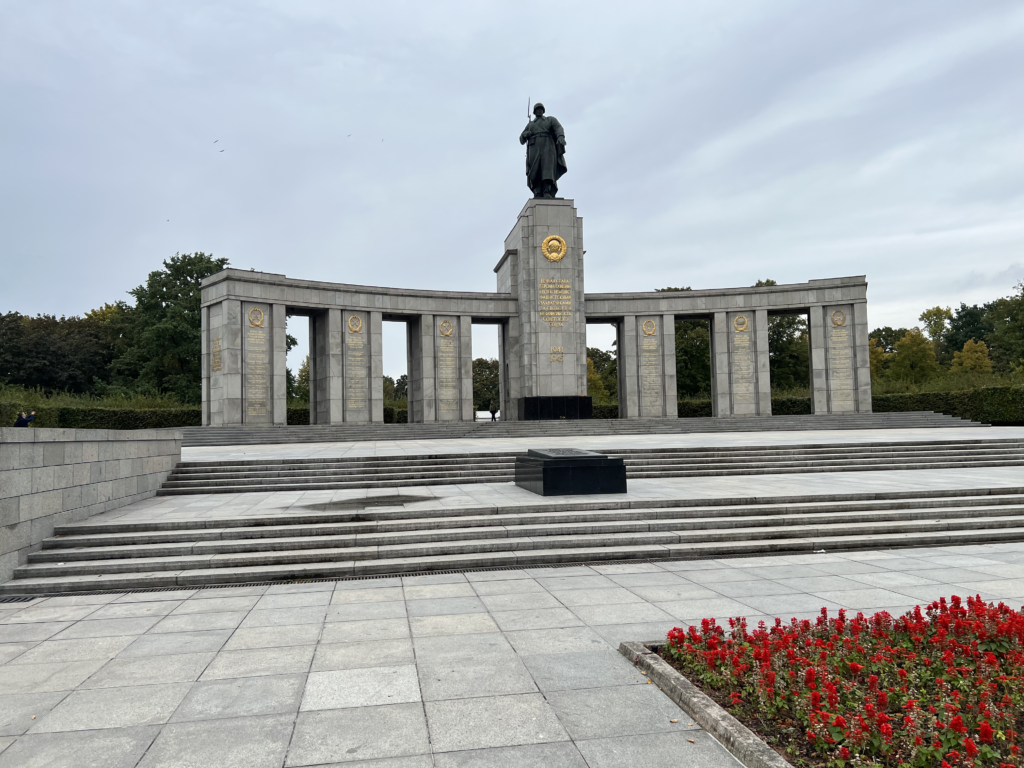
Bronze statues of rifle-bayonetting troops flank a marble cenotaph inscribed with over 7,000 names.
The centerpiece depicts a mourning Mother Nation cradling her dead son – a poignant representation of sacrifice. Surrounded by colonnade arches, the memorial’s neo-classical grandeur contrasts its peaceful gardens.
Yet its location symbolizes the rebirth after war’s devastation. For visitors, the monument serves as a powerful reminder of Berlin’s liberation from Nazi tyranny at tremendous cost.
East Berlin Moskau Restaurant
An iconic beacon of East Berlin’s communist era, the Moskau restaurant has beckoned guests since 1962 with its distinctive Russian imperial style.
The ornate facade features a vibrant mural depicting bucolic Soviet life – a stark contrast to austere German Democratic Republic surroundings.
While renovated after reunification, the Moskau retains its unique blend of Russian grandeur and 1960s East German kitsch. Dining here offers an immersive journey into Berlin’s divided past amidst red velvet banquettes and crystal chandeliers. For history buffs, it provides an intriguing glimpse behind the Iron Curtain.
Conclusion
Whether wandering through remnants of the Berlin Wall, reflecting at Holocaust memorials, or dining amidst Soviet-era opulence, Berlin immerses visitors in a complex journey through humanity’s highest hopes and lowest depths.
By confronting its painful divisions and rebirths, the city emerges as a profound testament to resilience and the enduring power of hard-won unity.
Berlin is a city that should be on everyone’s list.
